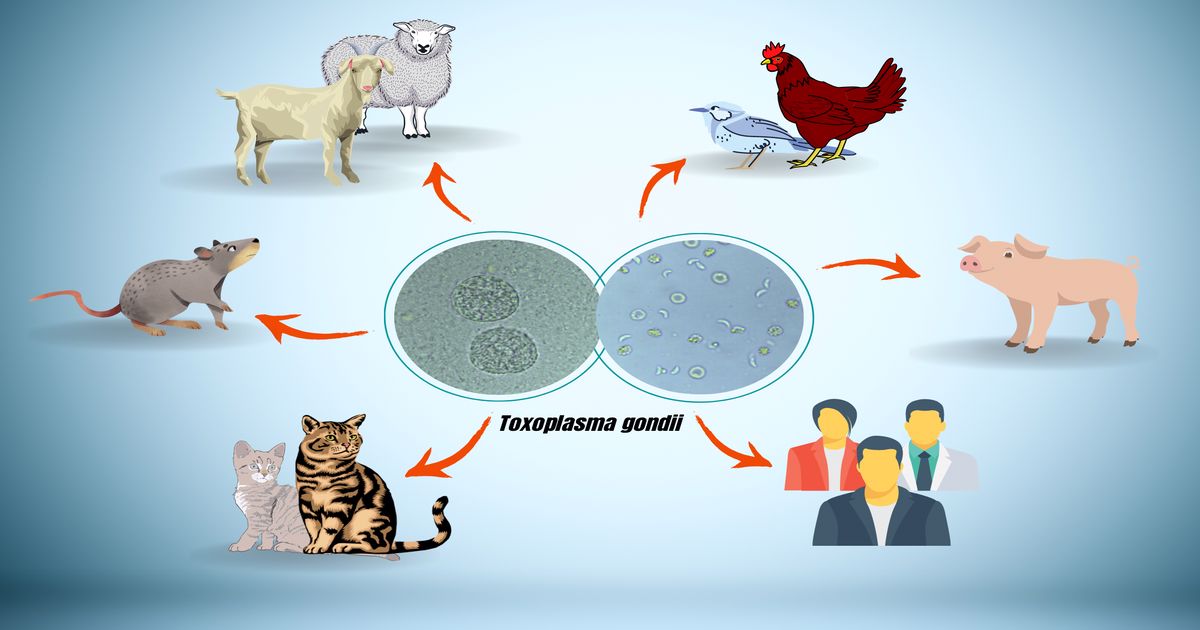Recent Advances in Toxoplasma gondii Infection and Toxoplasmosis
A special issue of Tropical Medicine and Infectious Disease (ISSN 2414-6366). This special issue belongs to the section "Infectious Diseases".
Deadline for manuscript submissions: closed (15 December 2023) | Viewed by 18705

Special Issue Editors
Interests: parasitology; veterinary parasitology; protozoology; helminthology; acarology; zoonosis
Special Issues, Collections and Topics in MDPI journals
Interests: parasitology; protozoosis; infectious diseases; toxoplasmosis; zoonosis
Special Issues, Collections and Topics in MDPI journals
Special Issue Information
Dear Colleagues,
Toxoplasmosis is a disease caused by the protozoan Toxoplasma gondii, which affects practically all warm-blooded animals, including humans, domestic animals, and terrestrial and marine wild animals. Susceptible hosts can be infected by T. gondii through the following primary forms: transplacental transmission, ingestion of animal tissues containing infective cysts, and the ingestion of water and food contaminated with cat feces containing sporulated oocysts. Toxoplasma gondii has a complex, facultatively heteroxenous life cycle that involves several stages of development and a range of hosts and environments. In humans, toxoplasmosis is often subclinical in immunocompetent adults; however, in immunosuppressed individuals, it can cause encephalitis and retinochoroiditis. In pregnant women, the parasite can be transmitted to the fetus, causing miscarriage or the development of chorioretinitis, intracranial calcifications and hydrocephalus in the fetus. In animals, T. gondii is responsible for causing miscarriage, fetal mummification, stillbirth and congenital disease, leading to economic losses and increasing production costs. It can also occur subclinically in immunocompetent animals. This characteristic, in addition to making diagnosis difficult, puts human health at risk since it allows the presence of chronically infected animals and facilitates the slaughter of infected animals for human consumption. The consumption of raw or undercooked meat and raw milk is a source of infection for humans. Because of this, it is important to know the spread of this protozoan, which can be identified through seroprevalence surveys. Furthermore, the description of the genetic variability of T. gondii with genotypic characterization studies is also very important for understanding its pathogenicity and virulence. The importance of this genetic knowledge is justified to try to establish a relationship between the genotype and the clinical manifestations, as well as possible associations such as the biological potential of the species, virulence, infectivity, and drug and vaccine resistance. With this Special Issue, we wish to invite our colleagues to submit original manuscripts, research papers, and meta-analyses to build a systematic collection of the available knowledge about T. gondii infection and toxoplasmosis.
Dr. Vinicius Longo Ribeiro Vilela
Dr. Thais Ferreira Feitosa
Guest Editors
Manuscript Submission Information
Manuscripts should be submitted online at www.mdpi.com by registering and logging in to this website. Once you are registered, click here to go to the submission form. Manuscripts can be submitted until the deadline. All submissions that pass pre-check are peer-reviewed. Accepted papers will be published continuously in the journal (as soon as accepted) and will be listed together on the special issue website. Research articles, review articles as well as short communications are invited. For planned papers, a title and short abstract (about 100 words) can be sent to the Editorial Office for announcement on this website.
Submitted manuscripts should not have been published previously, nor be under consideration for publication elsewhere (except conference proceedings papers). All manuscripts are thoroughly refereed through a single-blind peer-review process. A guide for authors and other relevant information for submission of manuscripts is available on the Instructions for Authors page. Tropical Medicine and Infectious Disease is an international peer-reviewed open access monthly journal published by MDPI.
Please visit the Instructions for Authors page before submitting a manuscript. The Article Processing Charge (APC) for publication in this open access journal is 2700 CHF (Swiss Francs). Submitted papers should be well formatted and use good English. Authors may use MDPI's English editing service prior to publication or during author revisions.
Keywords
- coccidia
- diagnosis
- one health
- oocysts
- protozoozis
- tachyzoites







